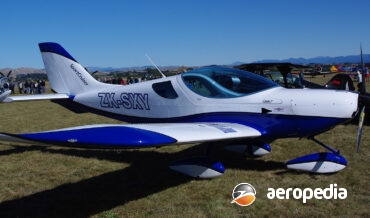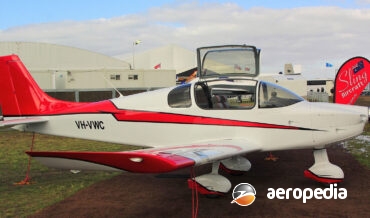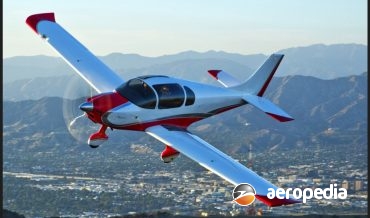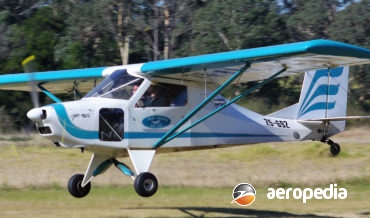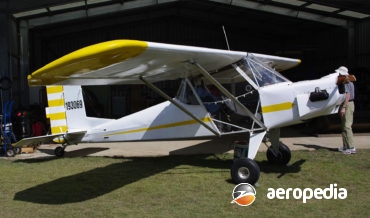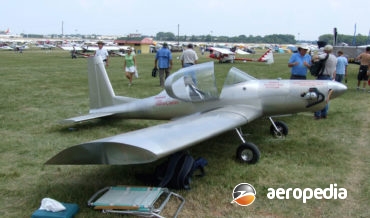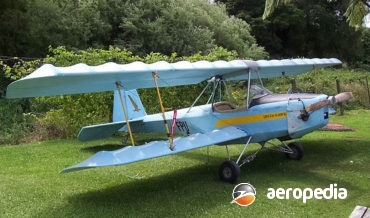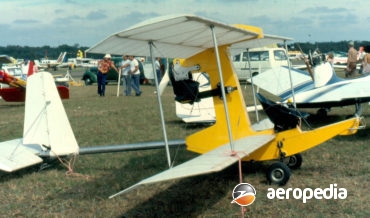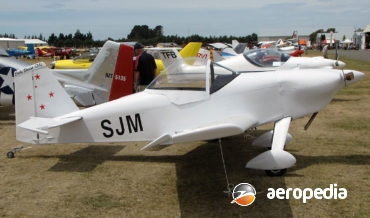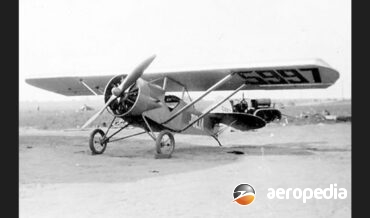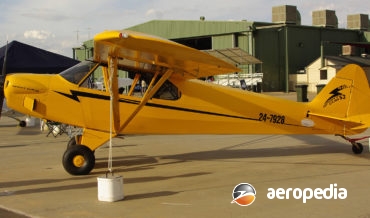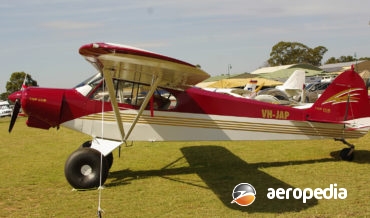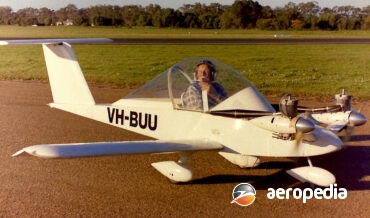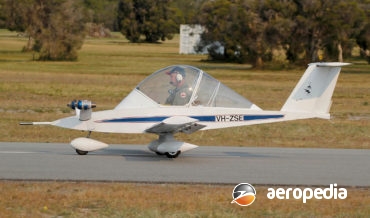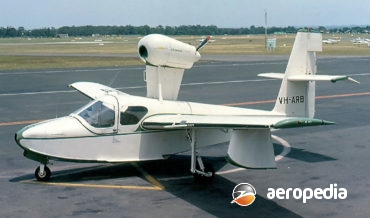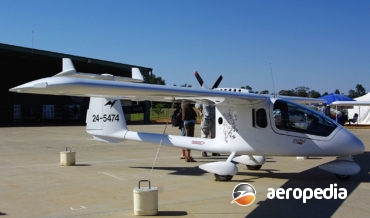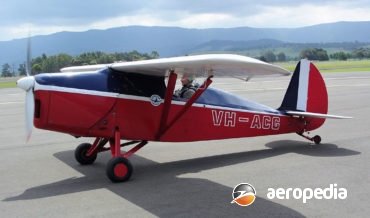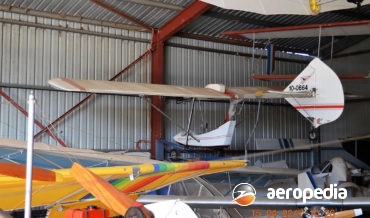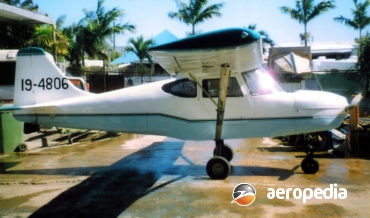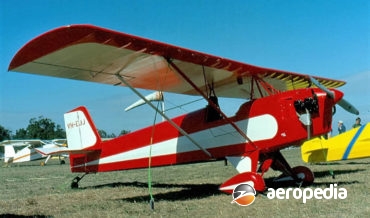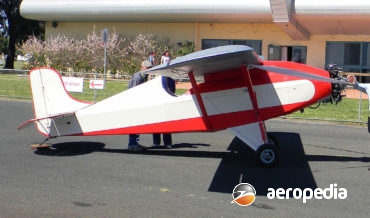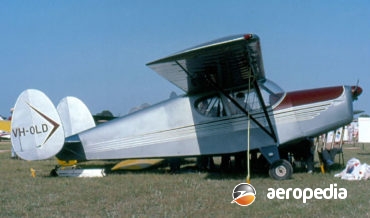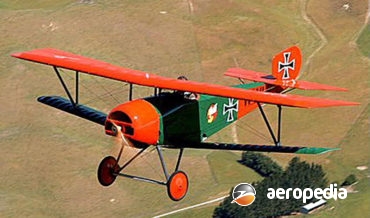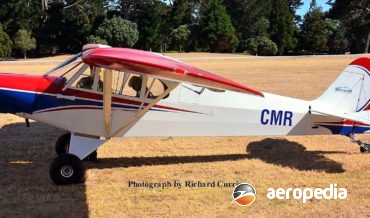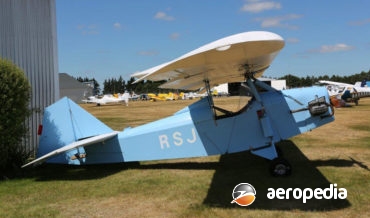All Contents
Contents
The SportsCruiser was designed in the Czech Republic as an all-metal low-wing, low maintenance aircraft and is built at the CZAW facility.
David C. Eyre
- June 26, 2020
The White Der Jager is a single-seat light amateur-built biplane designed and market by White Aircraft, being designed by Marshall White, and is a development of the Stolp SA-500 Starlet, the intention being to make the aircraft similar in appearance to a World War I biplane.
David C. Eyre
- March 23, 2020
Following the success of the Sling 2 the company moved to the construction of a four-seat variant using similar production methods, offering the aircraft in ready-to-fly form or as a kit-built aircraft.
David C. Eyre
- March 23, 2020
The Sling TSi first flew in 2018 and is produced by The Airplane Factory in South Africa and is a four-seat cabin monoplane fitted with a tricycle undercarriage developed from the company’s previous offering, the Sling 4.
David C. Eyre
- March 23, 2020
Construction of the prototype of the Lightwing series began in 1984 and, initially known as the GA-55, it flew for the first time in June 1986 and was built as a ‘micro-light’ to meet ANO 101-28.
David C. Eyre
- August 24, 2019
The P R Breeze is a single-seat variant of the PR-582 Pocket Rocket using the basic Lightwing fuselage, but fitting it with a single parasol configuration wing and installing a range of Rotax engines, including the Models 582, 503 or 618 two strokes, or the Rotax 912 four-stroke.
David C. Eyre
- August 24, 2019
The Ultra Cruiser was designed by Maurice Hummel and is produced by Hummel Aviation for the ultralight and sporting aircraft market and is available in kit form or as plans only form but may also be obtained as a read-to-fly aircraft.
David C. Eyre
- August 24, 2019
The Delta Hawk is a light single-seat sporting biplane which was available in the 1980’s in kit form in the United States, being designed by Mr R W Hovey of California.
David C. Eyre
- August 24, 2019
The Whing Ding was designed by Mr R W Hovey as an ultra-light aircraft which would require minimal construction time, would have STOL performance, and capable of easy dis-assembly for transportation and storage.
David C. Eyre
- August 24, 2019
The Hevle Classic is two-seat development of the Bowers or EAA Fly Baby which was designed as a simple, easy to fly, low-coast light aircraft for the amateur builder.
David C. Eyre
- August 24, 2019
The Typhoon was designed by the late William ‘Bill’ Andiel and marketed by Homebuilt Aviation in northern New South Wales.
David C. Eyre
- August 24, 2019
After the success of the Starlet, John Corby redesigned the aircraft to be constructed in metal, the new model becoming known as the CM-2 Kestrel, and after release of plans to home builders, construction of two examples commenced in New Zealand.
David C. Eyre
- May 17, 2019
This light sporting aircraft was initially produced by Corvus Aircraft Ltd, this company later becoming known as Corvus Hungary, the company over a period of eight years developing a fully composite light aircraft for private and training use, production of its aircraft by 2012 being said to be at a
David C. Eyre
- May 17, 2019
In 1912 Harvey Crawford, who lived in Los Angeles, placed an entry in the Third International Air Meeting at Domingues Hills near the city and took part in the event.
David C. Eyre
- May 17, 2019
As noted in the Top Cub article, CubCrafters was founded in 1980 by James Richmond in Wisconsin to re-build and modify Piper PA-18 Super Cubs and similar aircraft and eventually to redesign the aircraft and upgrade it to meet customer requirements.
David C. Eyre
- May 17, 2019
The CubCrafters CC11-100 was introduced to the Light Sport Aircraft market in the United States to meet a requirement for a lower-powered variants of its range and is an entirely new aeroplane designed from the ground up making extensive use of modern avionics, design techniques and composites including carbon fibre,
David C. Eyre
- May 17, 2019
CubCrafters was founded in 1980 by Mr James Richmond in Yakima, Wisconsin to re-build and modify PA-18 Super Cubs and similar aircraft, and by 2007 more than 120 aircraft had been through the company’s re-manufacturing facility.
David C. Eyre
- May 17, 2019
The Currie Wot sporting biplane was designed by J R Currie in the 1930s, with the first example being built by Cinque Ports Aviation Limited in the United Kingdom in 1937.
David C. Eyre
- May 17, 2019
The Full Metal Jacket is a newcomer to the light sports aircraft market and is of all-metal construction and built at Mildura, Vic, being a development of an aircraft known as The Bullet, which was a single-seat all-composite aircraft but about which little is known.
David C. Eyre
- May 17, 2019
The prototype of the Cri Cri series, known as the MC-10, was flown for the first time on 19 July 1973 powered by two 136-cc Rowena 6507J single-cylinder two-stroke engines, and was claimed to be the “smallest twin-engine aeroplane flying” and “the only aircraft able to lift a useful load
David C. Eyre
- May 17, 2019
The Cri Cri is a cantilever low-wing single-seat monoplane designed and produced in France which has been built by amateur builders around the world and is usually fitted with two JPX PUL 212 piston engines which provide 11-kw (15-hp), one fitted to each of the wings in tractor configuration.
David C. Eyre
- May 17, 2019
The skimmer was a successful foray into the production of an amphibian for private use by the Colonial Aircraft Corp.
David C. Eyre
- May 17, 2019
Colyaer SL has been building light sport aircraft for some years, the first aircraft produced being the Martin, which was fully certified and was a two-seater with a fixed tricycle undercarriage, this model becoming available in 1999 and in its later form was known as the Martin 3.
David C. Eyre
- May 17, 2019
Colyaer SL, [construcciones Ligeras y Aeronauticas S.L.] has been building light sport aircraft for some years, the first aircraft produced being the Martin, for which three prototypes were built, one of which was fully certified and was a two-seater with a fixed tricycle undercarriage, this model becoming available in 1999
David C. Eyre
- May 17, 2019
Designed by Flight Lieutenant Nicholas Comper, the founder of the Comper Aircraft Co Ltd, the CLA7 Swift was a tiny but very efficient single-seat sporting aircraft of wooden construction, fabric covered (except for the plywood rear decking), and powered by a 26-kw (35-hp) ABC Scorpion radial engine.
David C. Eyre
- May 17, 2019
The Stingray was an early foray into the construction of ultra-light aircraft in Australia, being placed into production by Composite Engineering Pty Ltd at Camden, NSW. Fitted with a tricycle undercarriage, it was built to +6 -4 G and had max cross-wind component of 37 km/h (23 mph). Fuel consumption
David C. Eyre
- May 17, 2019
This Company was based in Townsville, Qld and, in addition to producing its own designed aircraft, has been involved in the sale of ultra-light aircraft. One example is a strut-braced two-seat high-wing monoplane with a tricycle undercarriage which is fitted with a Subaru EA-81 engine with a direct drive, electric
David C. Eyre
- May 17, 2019
The Conroy Sparrow XC is an Australian designed single or two-seat light aircraft supplied in kit form to be completed in the amateur built or experimental categories. Designed by Christopher Conroy, it is one of a series of designs made available in recent years by Conroy Aircraft Components of Oxenford,
David C. Eyre
- May 17, 2019
The Baby Ace was designed in the early 1930s by O J Corben as a single-seat sporting aircraft which could be fitted with a variety of engines. Early aircraft were fitted with the 37-kw (50-hp) Salmson AD9, the Continental A40, or the 34-kw (45-hp) Szlesky.
David C. Eyre
- May 17, 2019
The Super Ace was one of a number of light aircraft designed for sporting pilots in the United States by Orland G Corben. His first design, the Ace, was first marketed in 1923 and this was followed in later years by the Junior Ace, the Cabin Ace and the Super
David C. Eyre
- May 17, 2019
Design of the Mini Coupe commenced in 1968, the first flight of the prototype taking place in September 1971. In June the following year it received its US FAA Certification in the Experimental Category and the designers in Hillsboro, Oregon subsequently began the sale of kits of components and materials,
David C. Eyre
- May 17, 2019
Chrislea commenced construction of its CH-3 Ace (G-AKFD), designed by R C Christophorides, at Heston in 1946, this initially being a high-wing cabin monoplane with a single fin and rudder and a tricycle undercarriage, having an unusual control system with a single wheel on a universal joint replacing the conventional
David C. Eyre
- May 17, 2019
Circa Reproductions in Canada is a company which produces plans to build 87-percent scale World War I aircraft, the aircraft design being produced by Graham Lee of Lamont, Alberta. Leading Edge Air Foils, based at Peyton in Colorado for a time provided construction kits for the designs.
David C. Eyre
- May 17, 2019
Circa Reproductions in Canada is a company which produces plans to build 87-percent scale World War I aircraft, the aircraft design being produced by Graham Lee of Lamont, Alberta.
David C. Eyre
- May 17, 2019
The Skybaby is a single-seat parasol wing homebuilt aircraft which was designed by the Clancy Brothers (William, Jack and Alan) at Rosebery in Sydney.
David C. Eyre
- May 17, 2019
The CubFlyer was designed by Malcolm Savill of Classic Aviation Designs in Hamilton, NZ. The idea was to have students at the Otamatea High School build an aircraft and in 2002 work commenced on the construction of a Light Miniature Aircraft LM-5X-W and this aircraft was completed on 9 April
David C. Eyre
- May 17, 2019
Due to the interest in 1930’s vintage aircraft, and the lack of an adequate supply of survivors, a replica of the 1930s era Waco YMF biplane has been developed and built by the Classic Aircraft Corp at Battle Creek, Lansing, Michigan.
David C. Eyre
- May 17, 2019
The Jenny is a two-thirds scale (67%) replica of the Curtiss JN4D Jenny of the 1920s and is a single-seat ultra light of biplane configuration. Although the design appears to have a second cockpit, this is non functional. The airframe is gusset riveted aluminium tubing with dacron covering.
David C. Eyre
- May 17, 2019
The Fred was designed by Eric Clutton in the United Kingdom as a single-seat light parasol-wing aircraft for amateur construction. The name “Fred” stands for “flying runabout, experimental design”.
David C. Eyre
- May 17, 2019
The Cozy was designed by Nathan Puffer in 1980 as a two-seat side-by-side development of the Rutan Long Ez, the first flight of the type taking place on 19 July 1982.
David C. Eyre
- May 17, 2019
Recent Comments
Archives
Categories
- No categories
Categories
- No categories
Latest Posts
Newsletter

